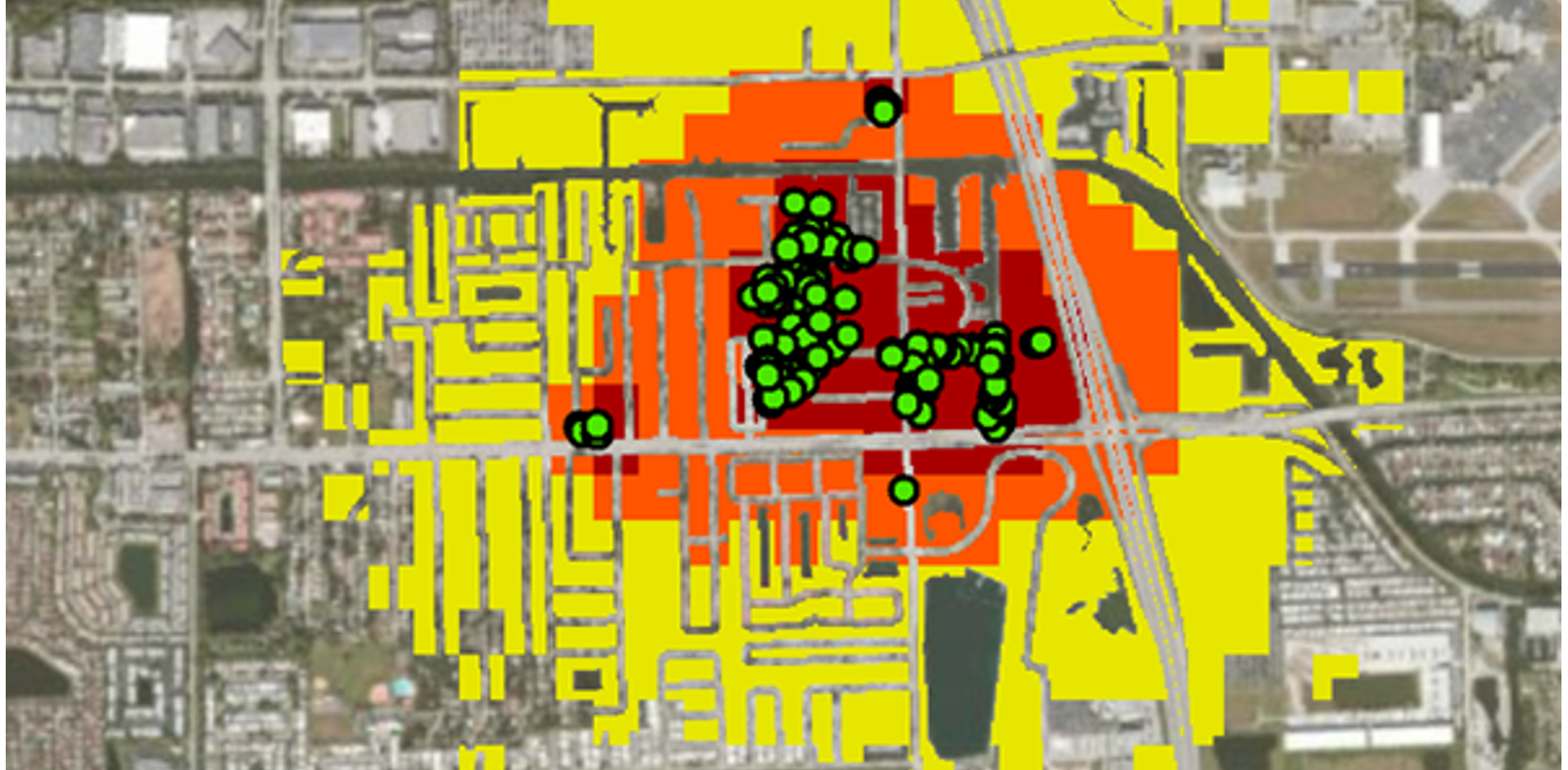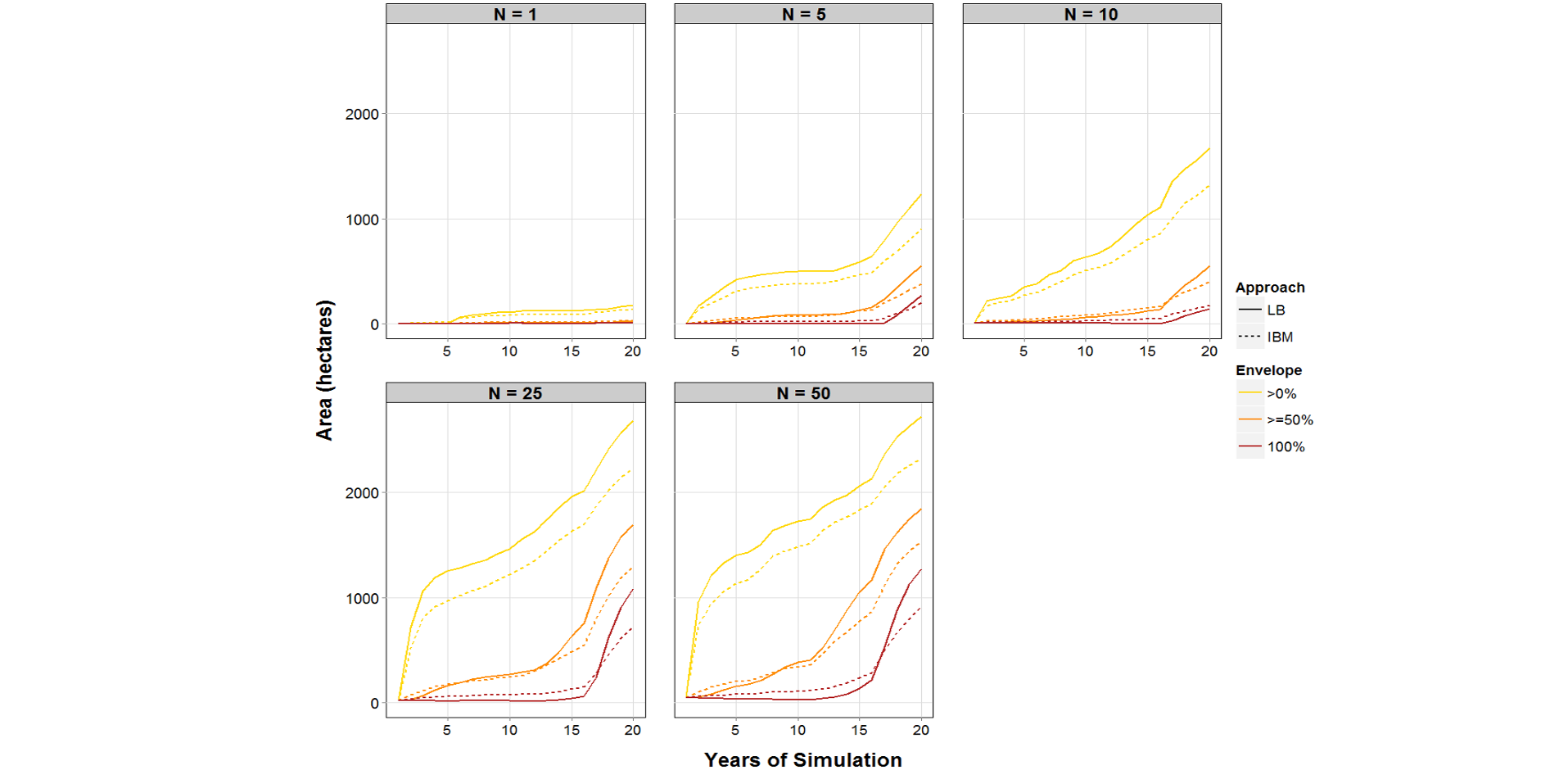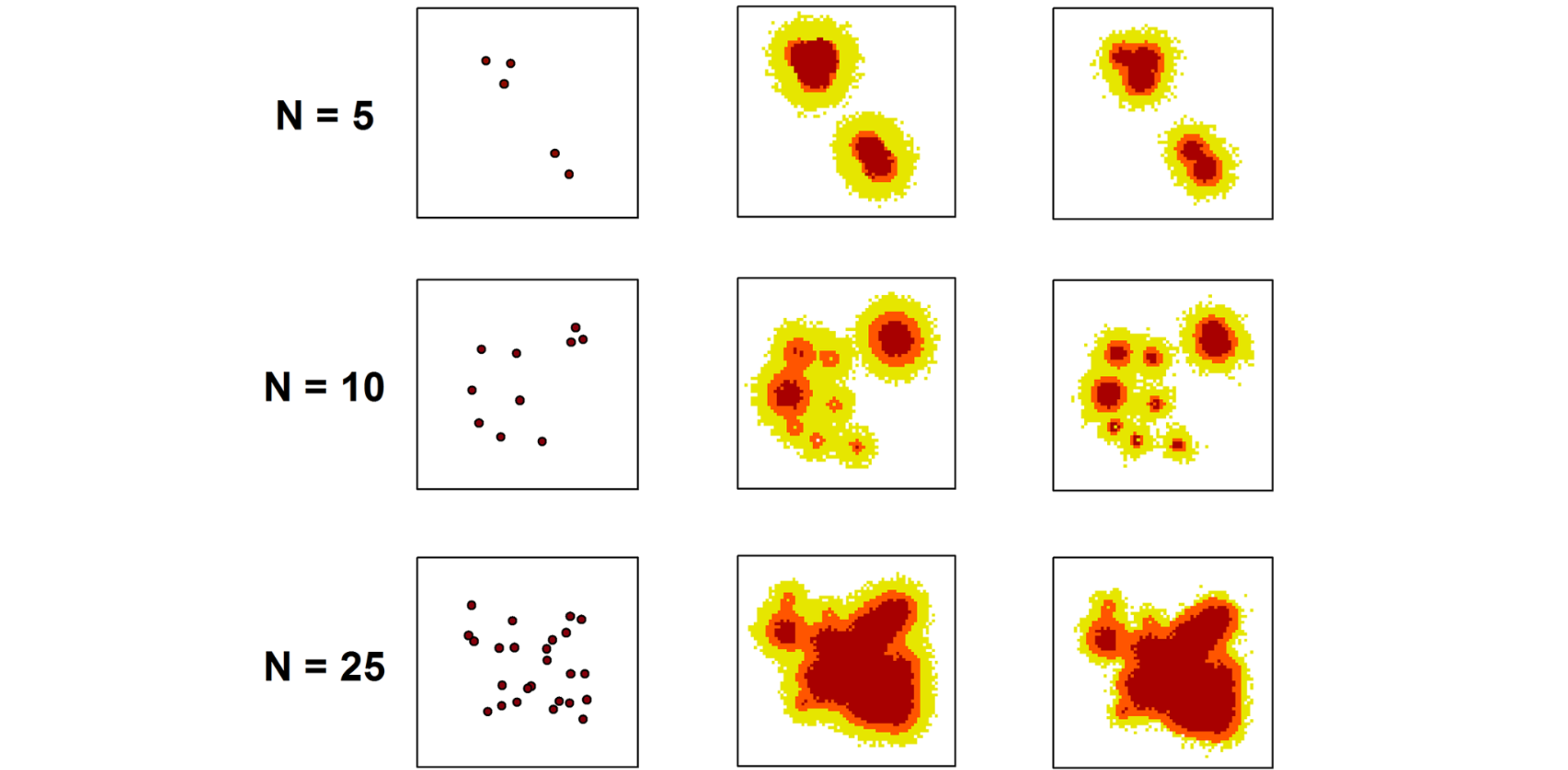Project Summary
Spatially-explicit simulation models can help state and local regulatory agencies to predict both the rate and direction of the spread of an invasive species from a set of surveyed locations. Such models can be used to develop successful early detection, quarantine, or eradication plans based on the predicted areas of infestation. Individual-based models (IBMs) are often used to replicate the dynamics of complex systems and are both able to incorporate individual differences and local interactions among organisms, as well as spatial details. In this work, we introduce a new stochastic lattice-based model for simulating the spread of invasive termites over a landscape and compare it to a recently published stochastic individual-based approach, based on the same ecological parameters, with the goal of improving its computational efficiency. The two modeling frameworks were tested over a homogeneous landscape with randomly located sources of infestation. Further, the setting of a case study of an invasive termite, Nasutitermes corniger (Motschulsky), was used to simulate the spread of the species in Dania Beach, Florida, U.S.A., and the results of the proposed model were compared with an earlier application of the IBM over the same area. The results show that the extent of the infested areas predicted by the new lattice-based model is similar, thus comparable, to the individual-based model while improving the computation time significantly.
Objectives
- Introduce a new stochastic lattice-based model for simulating the spread of invasive termites over a landscape
- Compare a lattice-based model to a stochastic individual-based approach with the goal of improving computational efficiency
- Draw one or more areas of intervention for regulatory agencies instead of wasting resources by randomly surveying unknown perimeters
Technology
Project Website:
https://doi.org/10.1016/j.ecoinf.2014.09.011
http://dx.doi.org/10.1603/EN12325
Deployment Architecture:
R, ESRI ArcGIS
Language:
R, Python


